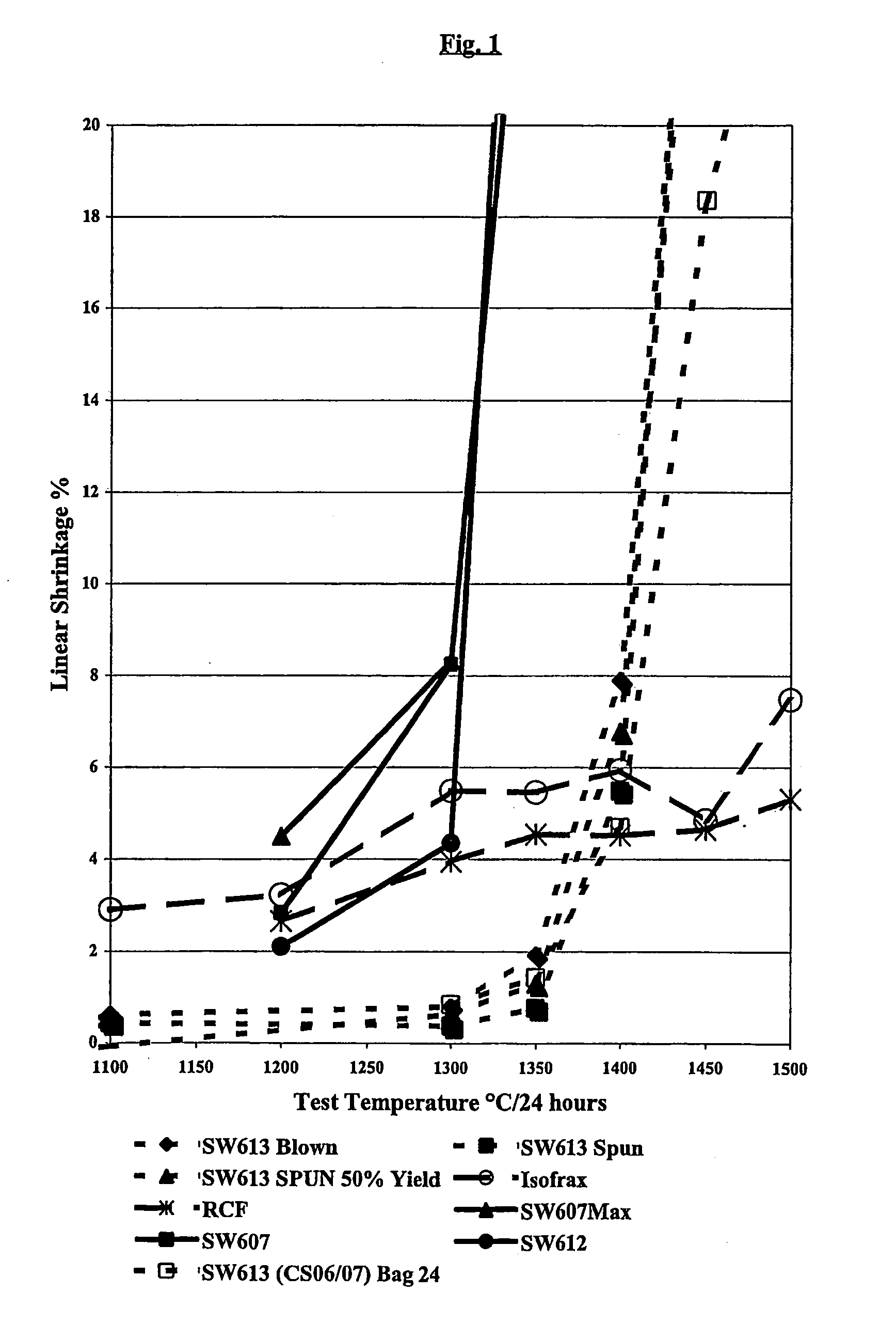Saline soluble inorganic fibres
a technology of inorganic fibres and soluble saline, which is applied in the field of soluble saline inorganic fibres, can solve the problems of no real substitute, asbestos is extremely insoluble, and health problems, and achieve the effects of improving fibre quality, reducing solubility, and reducing the amount of soluble salin
- Summary
- Abstract
- Description
- Claims
- Application Information
AI Technical Summary
Benefits of technology
Problems solved by technology
Method used
Image
Examples
Embodiment Construction
[0055]The inventors produced a range of calcium silicate fibres using an experimental rig in which a melt was formed of appropriate composition, tapped through a 8–16 mm orifice, and blown to produce fibre in a known manner. (The size of the tap hole was varied to cater for the viscosity of the melt—this is an adjustment that must be determined experimentally according to the apparatus and composition used).
[0056]The fibres were tested and the results for fibres that are predominantly calcium silicate fibres with some MgO are shown in Table 1, in which:[0057]shrinkage figures are shown as measured on a preform of fibre by the method (see below),[0058]compositions are shown as measured by x-ray fluorescence with boron by wet chemical analysis,[0059]total solubility in ppm of the major glass components after a 24 hour static test in a physiological saline solution is shown,[0060]specific surface area in m2g,[0061]a qualitative assessment of fibre quality,[0062]and an indication of whe...
PUM
| Property | Measurement | Unit |
|---|---|---|
| Temperature | aaaaa | aaaaa |
| Fraction | aaaaa | aaaaa |
| Fraction | aaaaa | aaaaa |
Abstract
Description
Claims
Application Information
 Login to View More
Login to View More - R&D
- Intellectual Property
- Life Sciences
- Materials
- Tech Scout
- Unparalleled Data Quality
- Higher Quality Content
- 60% Fewer Hallucinations
Browse by: Latest US Patents, China's latest patents, Technical Efficacy Thesaurus, Application Domain, Technology Topic, Popular Technical Reports.
© 2025 PatSnap. All rights reserved.Legal|Privacy policy|Modern Slavery Act Transparency Statement|Sitemap|About US| Contact US: help@patsnap.com

